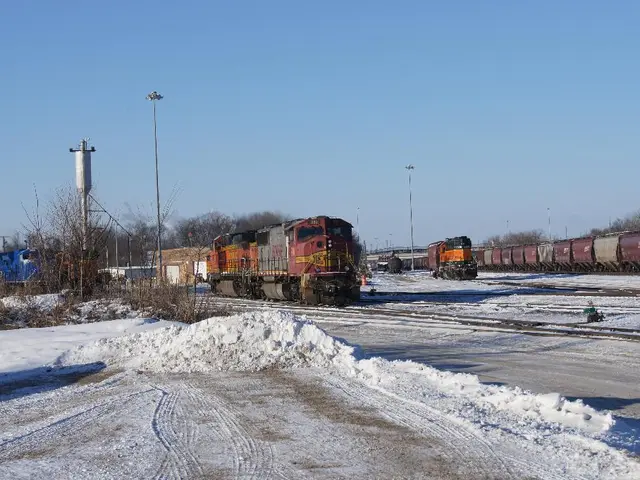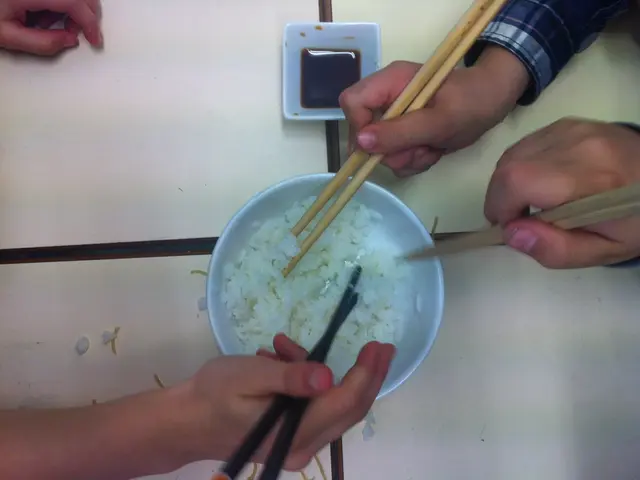Regions under Scrutiny: A Closer Look at the Zones in Question
**Discovering Japan's Regions: A Journey Through Nine Unique Landscapes**
Japan, an island nation renowned for its rich history, vibrant culture, and breathtaking landscapes, is divided into nine principal regions, each boasting its unique characteristics, culture, and attractions. Here's a concise overview of each region:
## Hokkaido
Hokkaido, Japan's northernmost island, is known for its vast wilderness, cold winters, and cool summers. Famous for skiing and snowboarding resorts such as Niseko and Furano, Hokkaido offers a haven for winter sports enthusiasts. The region also boasts national parks like Daisetsuzan and Shiretoko, as well as hot springs (onsen) and fresh seafood delicacies like hairy crab and sea urchin. Hokkaido's distinctive Ainu culture adds a unique touch to the region, with lavender fields and a less crowded, nature-oriented lifestyle.
## Tohoku
Tohoku, located in the northeast of Honshu, is known for its rugged landscapes, hot springs, and agricultural traditions. Matsushima Bay, one of Japan’s three scenic views, and the Sanriku Coast, with dramatic cliffs and memorial sites related to the 2011 tsunami, are among the region's top attractions. Traditional festivals like the Nebuta Matsuri and rice farming are also integral parts of Tohoku's culture. The region is rich in folk culture, historic samurai towns, and winter snowscapes.
## Kanto
The Kanto region, the political, economic, and cultural heartland of Japan, is centred on Tokyo. Skyscrapers, historic sites like Nikko shrines, hot springs in Hakone, Disneyland, and vibrant nightlife are just a few of the attractions that draw millions of visitors each year. Kanto is home to major media, technology, and fashion hubs, blending ultramodern and traditional cultures seamlessly.
## Chubu
Chubu, located in central Japan, is dominated by the Japanese Alps and both Pacific and Sea of Japan climates. Hida-Takayama, famous for its preserved Edo-period streets, sake breweries, and hot springs, is a must-visit destination. The alpine resort town of Hakuba and Matsumoto Castle are also popular attractions. Scenic mountain landscapes, preserved castle towns, and distinctive regional cuisines define Chubu's unique features.
## Kansai
Kansai, the birthplace of ancient Japanese culture, includes Kyoto, Osaka, and Nara. Kyoto's temples and gardens, Nara's Todaiji Temple and deer park, Osaka's food and nightlife, and Himeji Castle are just a few of the region's top attractions. Historical sites, traditional tea ceremonies, sake production, and vibrant entertainment districts make Kansai a cultural treasure trove.
## Chugoku
Chugoku, western Honshu, is divided by the Chugoku mountains into contrasting coastal and inland cultures. Hiroshima Peace Memorial Park (Atomic Bomb Dome), Miyajima Island with its floating torii gate, Izumo Grand Shrine, and Okayama’s Korakuen Garden are among the region's top attractions. Blend of industrial cities and rural landscapes, important historical sites, and religious heritage define Chugoku's unique features.
## Shikoku
Shikoku, the smallest of Japan’s four main islands, is known for its pilgrimage route (the Shikoku 88 Temple Pilgrimage). Ritsurin Garden (Takamatsu), Iya Valley’s vine bridges, Naruto whirlpools, and soothing hot springs are among the region's top attractions. Rural charm, spiritual journeys, and unique local traditions characterise Shikoku.
## Kyushu
Kyushu, the southernmost of the four main islands, has a warm climate, active volcanoes, and rich history. Nagasaki's international heritage, Kumamoto Castle, Beppu's hot springs, Yakushima Island, and Kagoshima's Sakurajima volcano are among the region's top attractions. Distinctive local cuisines, hot spring resorts, and unique historical sites define Kyushu's unique features.
## Okinawa
Okinawa, the southernmost prefecture, has a subtropical climate and a distinct culture influenced by both Japan and Southeast Asia. Beautiful beaches, Shuri Castle, Churaumi Aquarium, and the Ryukyu Kingdom historical sites are among the region's top attractions. Unique Ryukyuan culture, distinct music and dance, longevity traditions, and a slower pace of life characterise Okinawa.
- For winter sports enthusiasts seeking tranquility, consider Hokkaido's hot springs (onsen) and famed resorts like Niseko and Furano, offering a unique cultural experience with the Ainu culture, exemplified by lavender fields and a nature-oriented lifestyle.
- Tohoku, with its rugged landscapes, boasts attractions such as Matsushima Bay and the Sanriku Coast, as well as traditional customs like the Nebuta Matsuri festival and rice farming.
- Kanto, the cultural heartland of Japan, offers a blend of traditional sites like Nikko shrines and Hakone's hot springs with modern attractions like Tokyo's skyscrapers, vibrant nightlife, and technology hubs.
- Chubu, characterized by the Japanese Alps and diverse climates, presents destinations like Hida-Takayama, known for its Edo-period streets, sake breweries, and hot springs, as well as scenic mountain landscapes and preserved castle towns.
- Discover the cultural riches of Kansai, including Kyoto's temples, Nara's deer park, and Osaka's food and entertainment districts, which offer a glimpse into traditional tea ceremonies, sake production, and historical sites that showcase the birthplace of ancient Japanese culture.




